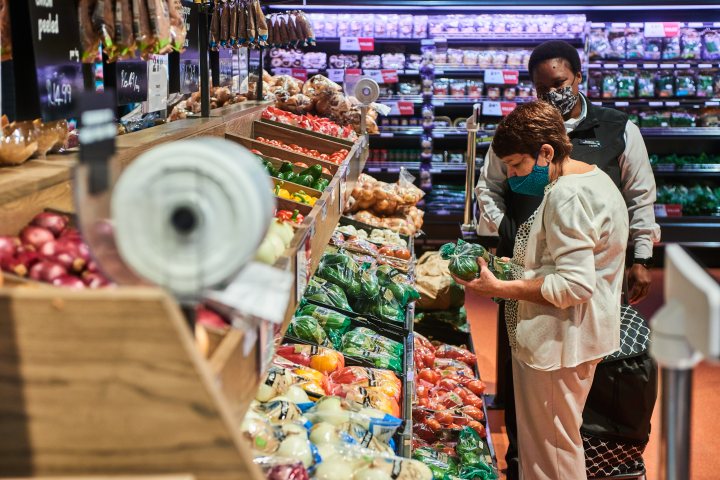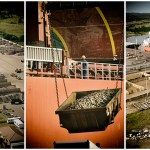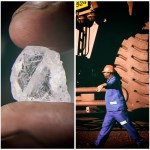AFTER THE BELL
The glass-is-a-quarter-full view of the economy

There is a way of understanding the SA economy from the glass-a-quarter-full point of view, which was on Technicolor display on Tuesday when GDP growth surprised massively on the upside.
Most perceptions of the SA economy are generally negative – and understandably so. South Africa’s underperformance over the past 15 years has been truly spectacular. The country’s average real GDP growth since 1980 has been around 2.1% per year. That’s less than advanced economies, the world, emerging markets (obvs) and sub-Saharan Africa. In fact, you can take practically any subsect you want and SA has underperformed it.
Yet, there is a way of understanding the SA economy from the glass-a-quarter-full point of view, which was on Technicolor display on Tuesday when GDP growth surprised massively on the upside.
The Q3 quarter-on-quarter GDP growth came in at 1.6%, which is hardly spectacular and is, at least partly, a bounce back from 0.7%.
But here is the interesting thing: the median of 12 economists’ estimates in a Bloomberg survey was for growth of 0.4%. Before today, there was lots of discussion about a possible “technical” recession resulting from two consecutive quarters of contraction.
It’s always a little bit satisfying when economists get things so hopelessly wrong, because generally they tend to be fabulously smart and very assured. But it’s worth pointing out that economists are almost always right over the longer term. Still, this is a spectacular miss. Are we all just too gloomy for our own good?
I think two things affect South Africa’s judgement negatively, and sometimes they overshadow a more holistic view of the economy. The first is load shedding. I suspect what was really weighing on the minds of economists was the dramatic increase in power blackouts this year. That has to have an effect on growth, doesn’t it?
Turns out, not so much. I suspect South Africans, ever a resourceful bunch, are beginning to find workarounds. That’s not a good thing. The very fact that you have to find workarounds to anything is by definition a pain in the buttocks.
But it’s worth noting that one of the two surprise sectors this quarter was manufacturing, which increased 1.5% this quarter, which you might have thought would have been badly affected by load shedding.
Sadly, and wonderfully, we seem to have managed to install alternative energy sources (alternative to Eskom, at least) in most of the productive parts of the economy. This is not good for our lifestyles, but it does mean the economy is possibly getting more resilient vis-à-vis Eskom than it was in the past.
The second issue that tends to overshadow SA’s economic prospects is politics. I don’t mean just that SA’s middle class is extremely bitter and angry at the ANC, although there is some of that (one of my colleagues this week likened it to an abusive relationship). It’s more that the narrative of SA’s politics is so unrelentingly grim that you expect the economy to be more affected than it is.
Visit Daily Maverick’s home page for more news, analysis and investigations
But the government has for years now been the most marginal contributor to the economy, and, gradually, its functions are being taken over by the private sector, which is doing a pretty good job of it.
Education, health and security are all sectors, just to name a few, where we have seen dramatic private sector growth, which has all come at the expense of the government.
This is happening on both a macro and a micro scale.
I was so amused to read recently that clothing store PEP’s store-to-store delivery service, Paxi, has delivered 4.2 million parcels during the year up to the end of September. That’s 11,500 parcels a day. It’s cheap, reliable and fast. You get SMS messages! There are prizes! It’s everything the Post Office should be – but is not.
You can see this in these GDP numbers: Government’s spending and fixed investment climbed 0.5% and 0.3%, respectively, quarter on quarter, way below almost every other sector.
And that’s a good thing because it means this growth is not debt-heavy; growth in government expenditure is almost always now funded by more debt.
The simple fact is that government is gradually becoming less important economically, a trend disguised a bit by its dramatically increased importance during the Covid period.
The big surprise was agriculture, which really spiked and was recorded up 19.2%, which has a knock-on to improved trade stats.
Mining is also holding up against lots of pessimism.
All of this means the economy is now a bit larger than it was in 2019 before the pandemic. But, of course, remember this is a glass-a-quarter-full point of view. For SA to purposefully start improving its unemployment rate, it needs a 5% year-on-year real growth rate – and the last time we got that was 15 years ago.
The consensus view is that none of this can last.
Even more load shedding in Q4, higher inflation, less supportive commodity prices and lower global growth means the future is bleaker.
But, you know, keep an eye on the bottom quarter of the glass – it may be fuller than you realise. BM/DM


















Comments - Please login in order to comment.